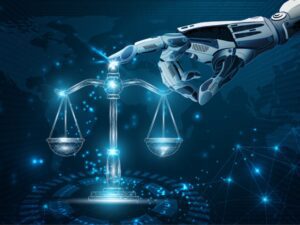Why Adopting AI is Critical For Legal Operations to Become Strategic Players

By Colin Levy
April 11, 2025

Colin Levy leads the legal function as General Counsel and Evangelist of Malbek, a leading CLM provider. Levy also advises startups and invests in emerging technologies that propel the industry forward. He has authored "The Legal Tech Ecosystem" and "CLM for Dummies” and contributes regularly to many publications. He can be reached at colin.levy@malbek.io.
Legal departments sit atop vast stores of information that could significantly enhance decision making across the enterprise. However, many leaders remain caught in a paradox: rich in data but poor in actionable intelligence. While legal teams have excelled at data collection—amassing extensive contract libraries, litigation records, and compliance logs—turning that information into strategic value remains a challenge. Adopting AI offers a promising solution, helping legal departments move beyond information hoarding to insights-driven action.
For years, legal operations leaders have been intrigued by the potential of artificial intelligence, with vendors touting tools for contract analysis, risk prediction, and compliance automation. But in practice, the results often fall short of expectations. To close the gap between hype and reality, legal teams need a practical roadmap. This guide explores how forward-thinking legal departments are adopting AI to shift from traditional cost centers to strategic business enablers, delivering measurable impact and elevating their role in the organization.
Strategic Decision Making Through AI Integration
Forward-thinking legal departments are using AI not just to improve internal processes but to directly influence business strategy. This shift requires deliberate alignment between legal AI capabilities and enterprise goals.
For example, a legal department might deploy an AI-driven litigation risk model that evaluates product specifications against historical litigation trends and regulatory frameworks. This insight lets product teams integrate legal recommendations during early design phases—mitigating risk before development costs accrue—rather than relying on late-stage legal review.
Collaborative Intelligence: Humans and AI Working Together
Effective legal AI implementations enhance—not replace—attorney capabilities, creating collaborative systems that combine human judgment with machine efficiency.
The most successful organizations deconstruct legal workflows to identify tasks best handled by AI—such as pattern recognition, document classification, and anomaly detection—while preserving human oversight for tasks requiring nuance and strategic reasoning. This hybrid approach is effective in contract analysis, compliance tracking, and litigation strategy.
AI systems rapidly scan vast datasets, flagging trends and inconsistencies. Attorneys then evaluate these findings using contextual knowledge, stakeholder insight, and legal skills. Together, they achieve outcomes neither could reach independently.
Training attorneys to collaborate with AI is essential. Leading legal departments develop usage protocols clarifying when to rely on AI recommendations and when to escalate for independent review. For example, in contract analytics, a flagged indemnity clause might be automatically classified but routed to legal for final approval if risk thresholds are exceeded.
Democratizing Legal Analytics Across the Enterprise
The impact of legal AI goes up significantly when its insights are provided beyond the legal department. Leading organizations implement self-service legal analytics tools that empower business units to make risk-informed decisions without constant legal intervention.
Successful implementations translate complex legal findings into user-friendly, business-aligned outputs. For example, sales teams might receive automated contract risk scores within their customer relationship management (CRM) systems, letting them go forward confidently with low-risk deals while flagging high-risk ones for legal input.
Rather than forcing stakeholders to navigate unfamiliar legal platforms, these tools embed guidance directly into existing business systems. This turns legal from a bottleneck into a strategic enabler—offering guardrails that speed execution while ensuring compliance.
Crucially, these systems are built through cross-functional collaboration. Joint ownership models between legal and business units ensure alignment on system goals, decision rules, and success metrics—ensuring adoption and maintaining accountability.
Advanced Applications in Risk Prediction and Mitigation
AI enables legal departments to shift from reactive compliance to proactive risk governance. By identifying emerging risks early, organizations can intervene before issues escalate into violations or liabilities.
Predictive compliance tools analyze external regulatory developments, historical enforcement actions, and internal behavior to highlight potential risks in real time. For example, an AI system might flag increased audit risk due to policy deviations in specific regions—prompting preemptive internal reviews.
Sophisticated programs don’t just detect risk—they shape user behavior through automated guardrails and intelligent workflows. For example, policy management systems can embed behavioral nudges that guide employees toward compliant choices via contextual prompts or dynamic forms that adapt based on user input.
The Future: Scenario Planning and Strategic Value
The most advanced legal departments are integrating AI into scenario modeling platforms that support strategic planning. These systems simulate regulatory pathways for market expansion, evaluate liability exposure based on design features, or project litigation risk under different business strategies.
To achieve this, legal data is combined with operational metrics and external intelligence. For example, a pharmaceutical company might use AI to model the regulatory approval likelihood for a new therapy across multiple jurisdictions—helping executive teams set aside resources .
The most effective implementations convert legal insight into quantifiable business terms, such as financial risk exposure or revenue protection. This shift enables legal to participate in strategic tradeoffs alongside finance, operations, and commercial teams—not just approve or reject proposals, but recommend risk-adjusted alternatives.
Measuring Business Impact and Ensuring Ethical Implementation
Robust measurement frameworks are essential to sustain AI-driven legal transformation. These frameworks typically track both operational outcomes (e.g., reduction in contract review times, improved risk detection rates) and business-level metrics (e.g., accelerated revenue recognition, reduced litigation costs, improved regulatory posture).
Crucially, legal metrics must be translated into business language. Instead of reporting technical measures like classification accuracy, mature programs tie legal AI contributions directly to KPIs such as sales cycle acceleration, cost avoidance, or capital efficiency.
As AI systems gain autonomy and influence, strong governance is essential. A tiered, risk-based oversight model—where governance intensity is calibrated to system scope and criticality—helps balance innovation with control.
Explainability is a non-negotiable feature in legal AI. Unlike domains like ad targeting or content recommendation—where black-box models might be tolerated—legal applications must offer clear reasoning behind AI outputs. This ensures transparency, supports user trust, and upholds legal accountability.
Transforming Legal Operations Through AI
The journey from traditional legal support function to AI-powered strategic partner demands more than new tools—it requires rethinking how legal creates value.
Organizations making this leap build strong data foundations and identify use cases aligned with business goals. They establish cross-functional partnerships that integrate legal insight with technical implementation, and they define success in business—not legal—terms.
These transformed departments go beyond reducing costs or speeding tasks. They influence how organizations plan, execute, and mitigate risk—showing legal’s value through direct contributions to enterprise performance.
Embracing the Legal Department of Tomorrow
The most powerful outcome of legal AI adoption isn’t technological—it’s cultural. Legal teams embracing AI evolve from reactive service providers into forward-looking strategic partners.
This evolution reshapes internal dynamics. In traditional models, business teams often view legal as a source of friction—engaging only to secure approvals or avoid missteps. AI-equipped legal departments shift this perception by providing real-time insights, predictive guidance, and streamlined engagement.
When legal partners help business units seize opportunities with confidence—rather than delay execution—the function becomes integral to decision making. Legal is no longer a back-end reviewer and becomes a co-architect of strategy.
Achieving this shift requires bold leadership. Legal operations professionals must challenge outdated roles and advocate for a reimagined, data-powered legal function. They must show legal’s true value lies not in compliance alone, but in shaping outcomes that drive business success.
The future belongs to legal departments that embrace this vision. By leveraging AI not just to move faster—but to operate differently—they unlock new dimensions of value: enabling smarter decisions, mitigating risk proactively, and embedding legal intelligence into the core of enterprise strategy.
Critical intelligence for general counsel
Stay on top of the latest news, solutions and best practices by reading Daily Updates from Today's General Counsel.
Daily Updates
Sign up for our free daily newsletter for the latest news and business legal developments.




